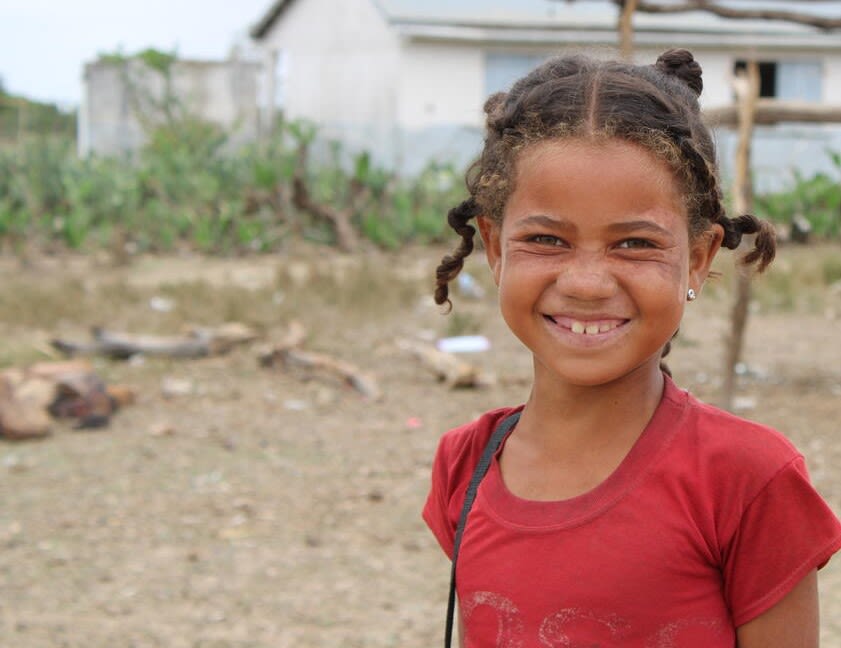OUR IMPACT IN 2023
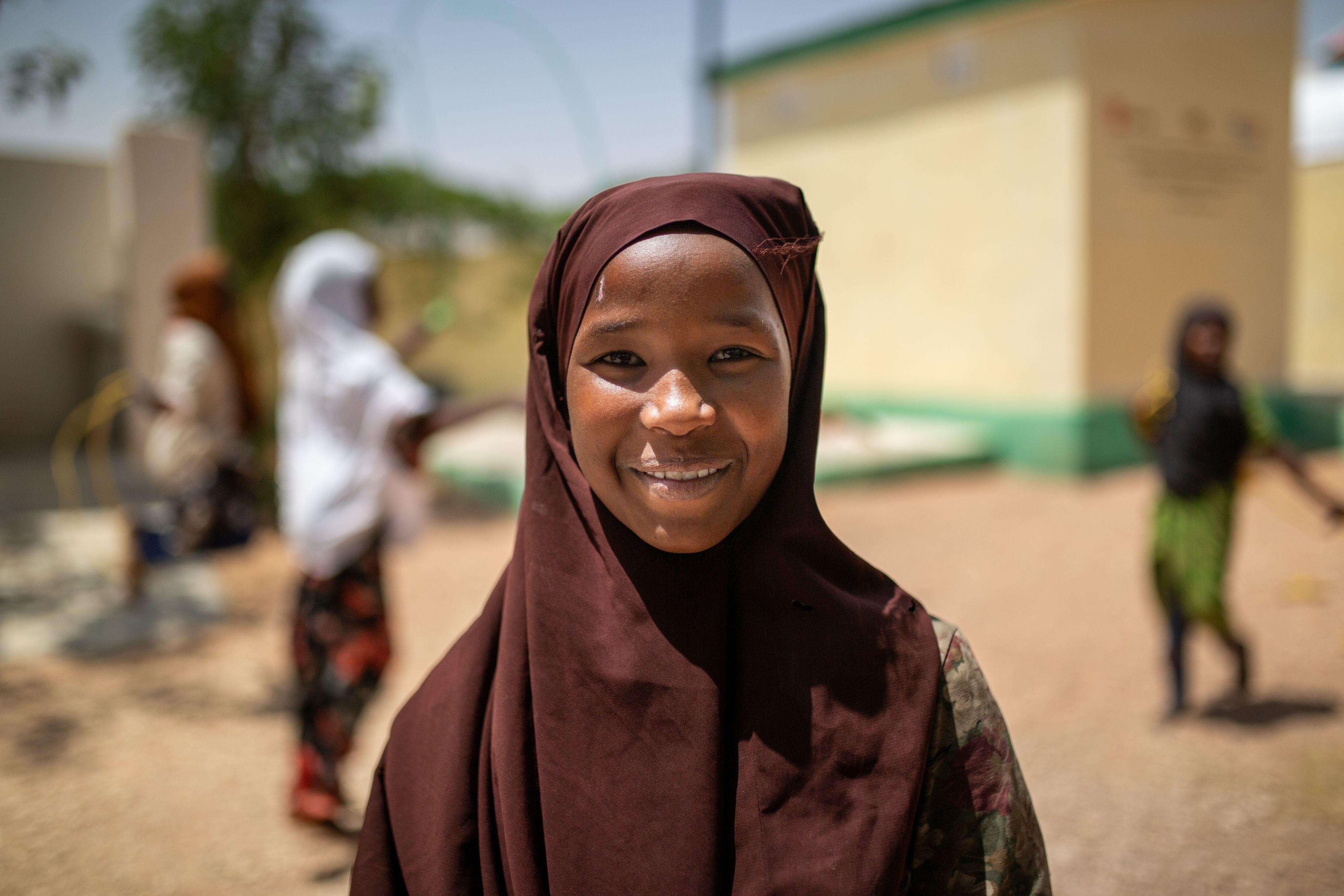
SAVE THE CHILDREN INTERNATIONAL IS PROUD TO SHARE OUR DIGITAL ANNUAL REVIEW FOR 2023.
CONTENTS
Letter from our CEO, Inger Ashing
Who We Are
Global Snapshot 2023
Where We Worked in 2023
The World in 2023
Our Strategy at a Glance
OUR RESULTS AND IMPACT IN 2023
Healthy Start in Life
Safe Back to School and Learning
Live Free From Violence
Safety Nets and Resilient Families
Our Humanitarian Work
Upholding Children's Rights
The Climate and Children's Rights
OUR PEOPLE AND CULTURE
LOOKING AHEAD
Reflections from Angela Ahrendts, Chair of the Board
*Throughout this report, asterisks denote where names have been changed to protect identities.

A LETTER FROM THE CEO, INGER ASHING
"In 2023, children worldwide faced countless challenges, crises, inequality, and threats to their rights. The situation for children in humanitarian emergencies in 2023 was dire and unacceptable.
We are doing our utmost to respond to the erosion of children’s rights worldwide, and growing inequality. In times of crisis, we are always among the first organisations to deliver life-saving support for children and their families.
I feel an overwhelming sense of pride in the difference Save the Children is making. Working together with children, local communities, and our local, national, and international partners, we will continue to amplify our collective impact to create lasting, positive change for children worldwide."
Inger Ashing
CEO, Save the Children International

WHO WE ARE
SAVE THE CHILDREN IS THE WORLD’S LARGEST
INDEPENDENT CHILDREN’S RIGHTS ORGANISATION.
WE’VE PROTECTED CHILDREN’S RIGHTS FOR
MORE THAN 100 YEARS.
TODAY, WE’RE PROUDLY WORKING WITH CHILDREN, THEIR COMMUNITIES, AND OUR PARTNERS WORLDWIDE, DISCOVERING NEW SOLUTIONS AND CREATING LASTING
CHANGE, TOGETHER.
The Save the Children Association is a global movement made up of Save the Children International and 30 member organisations (including three associate members working towards full member status) around the world. All these member organisations engage supporters and donors in their national context and deliver programmes and advocacy work to help children in their countries.

2023 GLOBAL SNAPSHOT
Last year, we made significant progress against our global strategy, reaching over 105 million children in at least 94 countries with our life-changing work.
This includes 33.7 million children reached through our health and nutrition work, 8.5 million children reached through education projects, 3.8 million children reached through child protection programming and 3.3 million children reached through child poverty programmes.
We influenced 99 policy, legislative, system, services, and budget changes for children, with children involved in 43 of those changes. This takes us to 228 policy changes since the start of 2022.
Our dedicated staff responded to the needs of children and communities affected by 121 new and ongoing emergencies in 63 countries in 2023. Our emergency response work supported over 31 million people, including 16 million children.
WHERE WE WORKED IN 2023
As a global movement, Save the Children Association operated in 115 countries in 2023. Save the Children International delivers international programmes and humanitarian responses and coordinates campaigns and advocacy for the movement.
In 2023, Save the Children International was made up of 55 country offices, five regional offices, two humanitarian response offices, three advocacy offices, 11 partner-led programmes, and a global team working on behalf of the whole movement. In some countries, we have more than one office type.
THE WORLD IN 2023
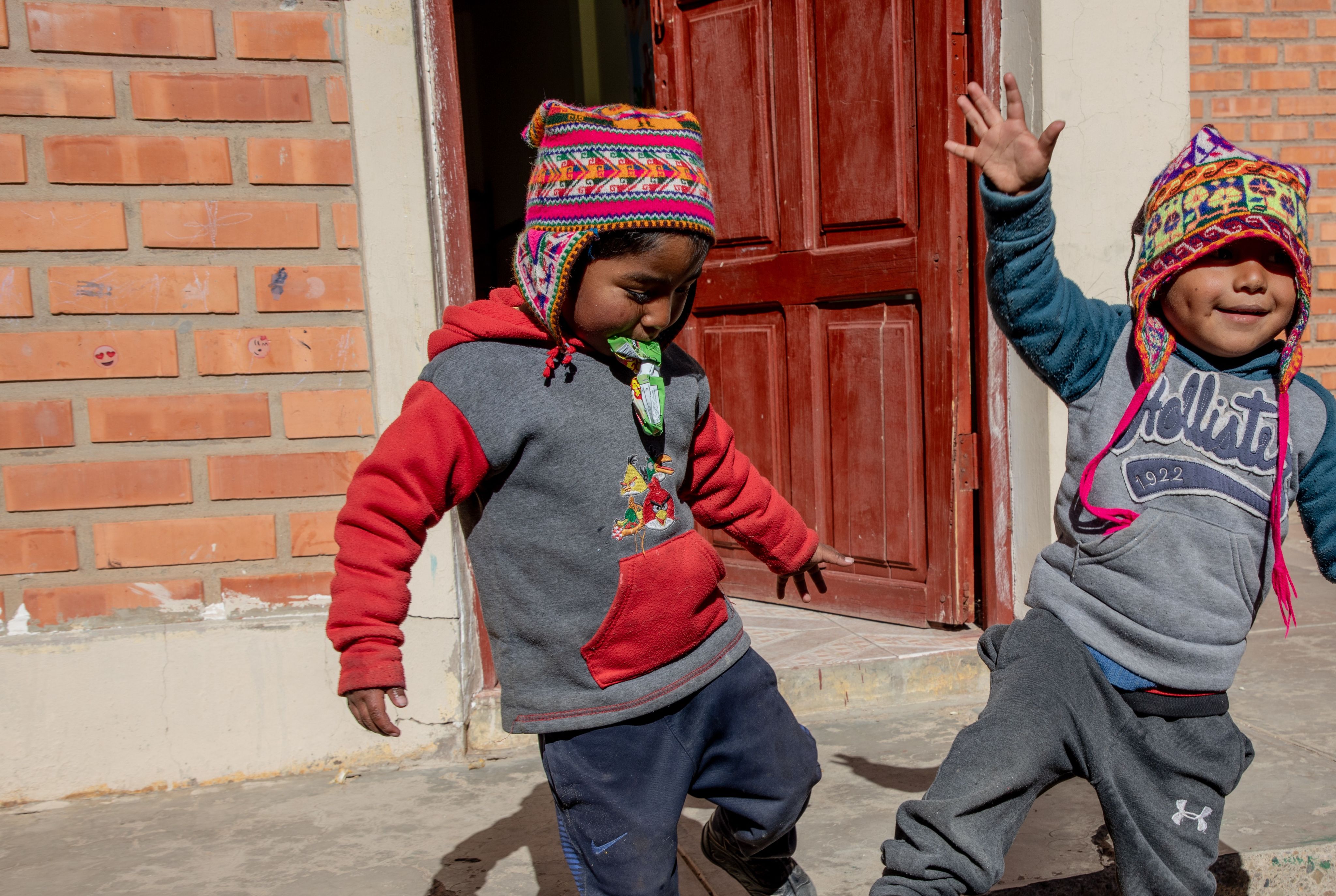
In 2023, millions of children suffered the consequences of floods, storms and droughts linked to climate change, struggled to access essential services amidst violent conflict, or continued to feel the socio-economic impacts of the COVID-19 pandemic.
2023 saw an unprecedented number of crises with conflicts impacting children in many countries including Israel and the occupied Palestinian territory, Ukraine, Myanmar, Haiti, Sudan, and the Democratic Republic of the Congo. Major humanitarian emergencies caused or exacerbated by the climate crisis disrupted the lives of children in countries including Türkiye, Syria, Morocco, and Libya.
Children, who bear minimal responsibility for these crises, are disproportionately suffering from their consequences. There are an estimated 2.4 billion children around the world. Of these:
• About one billion children are missing out on basic rights such as to nutritious food, clean water, or quality education1.
• An estimated 4.9 million children die needlessly before their fifth birthday each year.2 Nearly half of deaths among children aged under five are linked to undernutrition3.
• Nearly one billion children every year are living with violence in the home, at school, and now also online4.
In a rapidly changing global context, our movement-wide strategy aims to respond to and anticipate these threats and the erosion of children’s rights. We work in partnership to build resilient, equitable, and fully financed systems to support children and communities, and identify new
solutions, for and with children.
1. https://www.unicef.org/social-policy/child-poverty
2. https://www.unicef.org/press-releases/global-child-deaths-reachhistoric-
low-2022-un-report
3. https://www.who.int/news-room/fact-sheets/detail/malnutrition/
4. https://www.cdc.gov/violenceprevention/childabuseandneglect/
vacs/onebillion-children.html
OUR STRATEGY AT A GLANCE
SAVE THE CHILDREN IS WORKING GLOBALLY TO ACHIEVE OUR 2022–2024 GLOBAL STRATEGY, WHICH IS GROUNDED IN OUR 2030 AMBITION TO SAFEGUARD CHILDREN’S FUTURES AND CREATE LASTING, POSITIVE CHANGE.
WE’RE PUSHING FOR ALL COUNTRIES TO MAKE THESE THREE KEY BREAKTHROUGHS FOR CHILDREN BY 2030:
SURVIVE: No child dies from preventable causes before their fifth birthday
LEARN: All children learn from a quality basic education
BE PROTECTED: Violence against children is no longer tolerated
We drive impact by focusing on four strategic goals, also known as our Global Goals.
OUR RESULTS AND IMPACT IN 2023
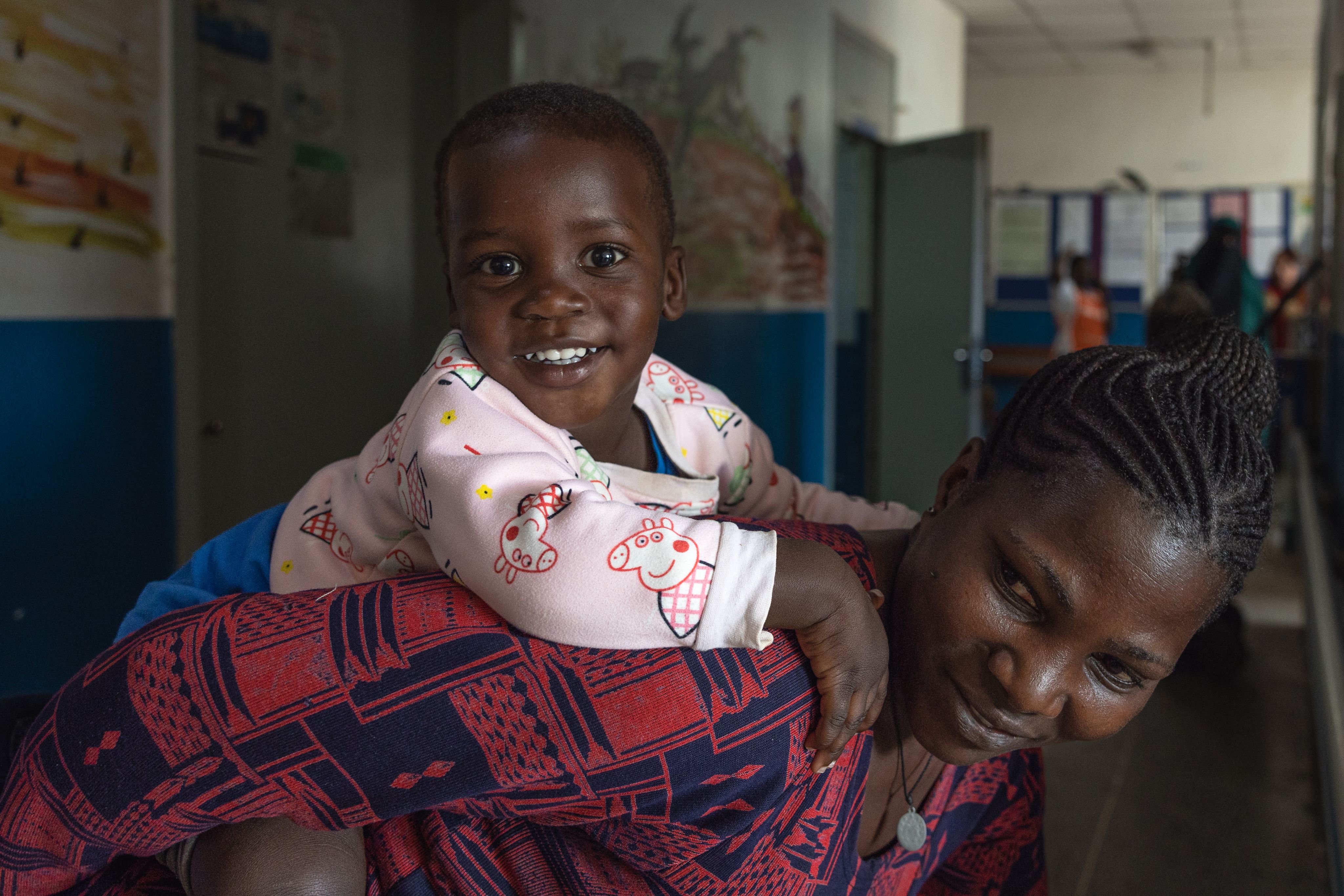
THE IMPACT WE SEEK
We are committed to creating changes for children, achieved in partnership, that realise children’s rights at scale, improve equality, and support children’s power.
We always strive to effect changes for children that are lasting and not reliant on our ongoing involvement. And we recognise that what is more important than our reach or activities is what happens to children as a result of our work – the true impact of our work.
OUR GLOBAL GOALS
CHILDREN HAVE A HEALTHY START IN LIFE
A healthy world for all children is possible. We are working to keep children healthy and safe throughout pregnancy and birth, with the nutrition and medical care they need to reach their fifth birthday, and thrive into adulthood.
CHILDREN ARE SAFELY BACK TO SCHOOL AND LEARNING
Education has amazing power to protect children from harm and help them grow into healthy adults. We are working to make sure children settle at school and get a quality education, supported by well-equipped teachers.
CHILDREN LIVE FREE FROM VIOLENCE
We are working with all our partners to protect children – especially girls and those in conflict situations – from physical and emotional violence, online and offline, and help survivors become healthy, nurturing adults.
CHILDREN GROW UP IN RESILIENT FAMILIES, PROTECTED BY SAFETY NETS
We’re working to make sure children and their families have strong welfare systems, cash assistance, and climate -smart livelihoods, so they and future generations can cope with shocks and break out of poverty.
FURTHER WORK SUPPORTING CHILDREN'S RIGHTS
OUR HUMANITARIAN WORK
Our humanitarian work makes a vital contribution towards our four global goals.
Save the Children responded to 121 new and ongoing emergencies in 63 countries in 2023.
UPHOLDING CHILDREN'S RIGHTS
We have been working with and for children for over 100 years to ensure their rights are respected, supported, and protected. Our work continues every day to try to realise our founding ambition for every child, everywhere, to secure their rights.
THE CLIMATE CRISIS AND CHILDREN'S RIGHTS
Climate change is hurting those least responsible for it most: children. We work with children on solutions that are changing children’s lives, and we’ll keep on innovating to discover more, hand in hand with children and their communities.
HEALTHY START IN LIFE
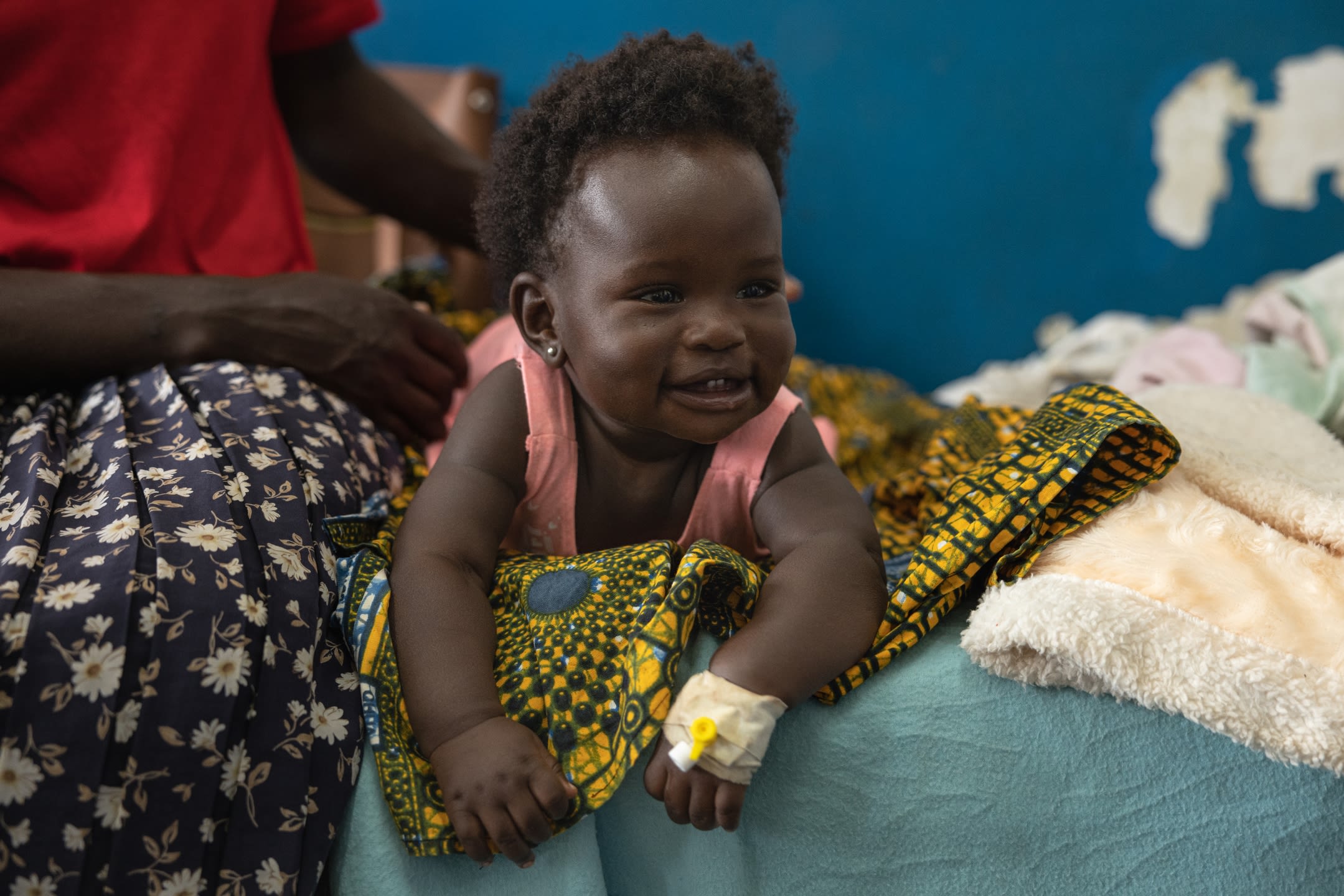
Overall progress towards our Healthy Start in Life goal is strong. We have seen gains in our work to ensure institutions are accountable for children’s rights and we have seen significant financial commitments to our global health work.
• In 2023, we trained 45,000 community health workers and health care providers. This represents 129% of the target we aimed to reach by 2024.
In humanitarian contexts:
• We ensured children and their families living in or fleeing crises could continue to access life-saving health and nutrition services, by helping to treat and prevent injuries, illnesses, diseases, and malnutrition.
• We supported the continuation of essential services, such as maternal and newborn care, childhood vaccination campaigns, and sexual and reproductive healthcare, including specialist services for gender-based violence survivors.
• We made sure children could access drinking water, toilets and washing facilities to help protect them from deadly illnesses and diseases, and to preserve their dignity.
• We accelerated our impact by shifting power to local actors wherever possible, by supporting and scaling up community-based approaches and investing in services led by local and national health authorities.
A HEALTHY START IN LIFE FOR BABY KAMILA*
Our work on child nutrition last year saw us work with young infants, like Kamila* [pictured] and their mothers in hard-to-reach communities in Yemen, Syria, Somalia, Mozambique, Kenya, Nigeria, and Colombia.
We worked with partners including the Latter-day Saint Charities, MAC Foundation, UNICEF, and UNHCR to promote proper nutrition and care and improve the growth of vulnerable infants aged under six months. The project is making a significant impact in improving growth, preventing and managing wasting, and saving the lives of nutritionally vulnerable newborns and infants.
Our teams have developed a screening and referral tool for low literacy audiences to reduce infant deaths and improve the community’s capacity to identify danger signs. We have also introduced mental health and psychosocial support training material for front line health workers.
By January 2024, the project had:
• Screened more than 18,650 mother-infant pairs
• Enrolled more than 5,800 into MAMI services
• Trained more than 950 health workers and
community members.
We expect to reach another 49,000 mother-infant pairs in the second year of the programme (2024–25).
Photos: Baby Kamila*, 5 months, held by her mother, is recovering from malnutrition in Somalia.
Credit: Mustafa Saeed / Save the Children.

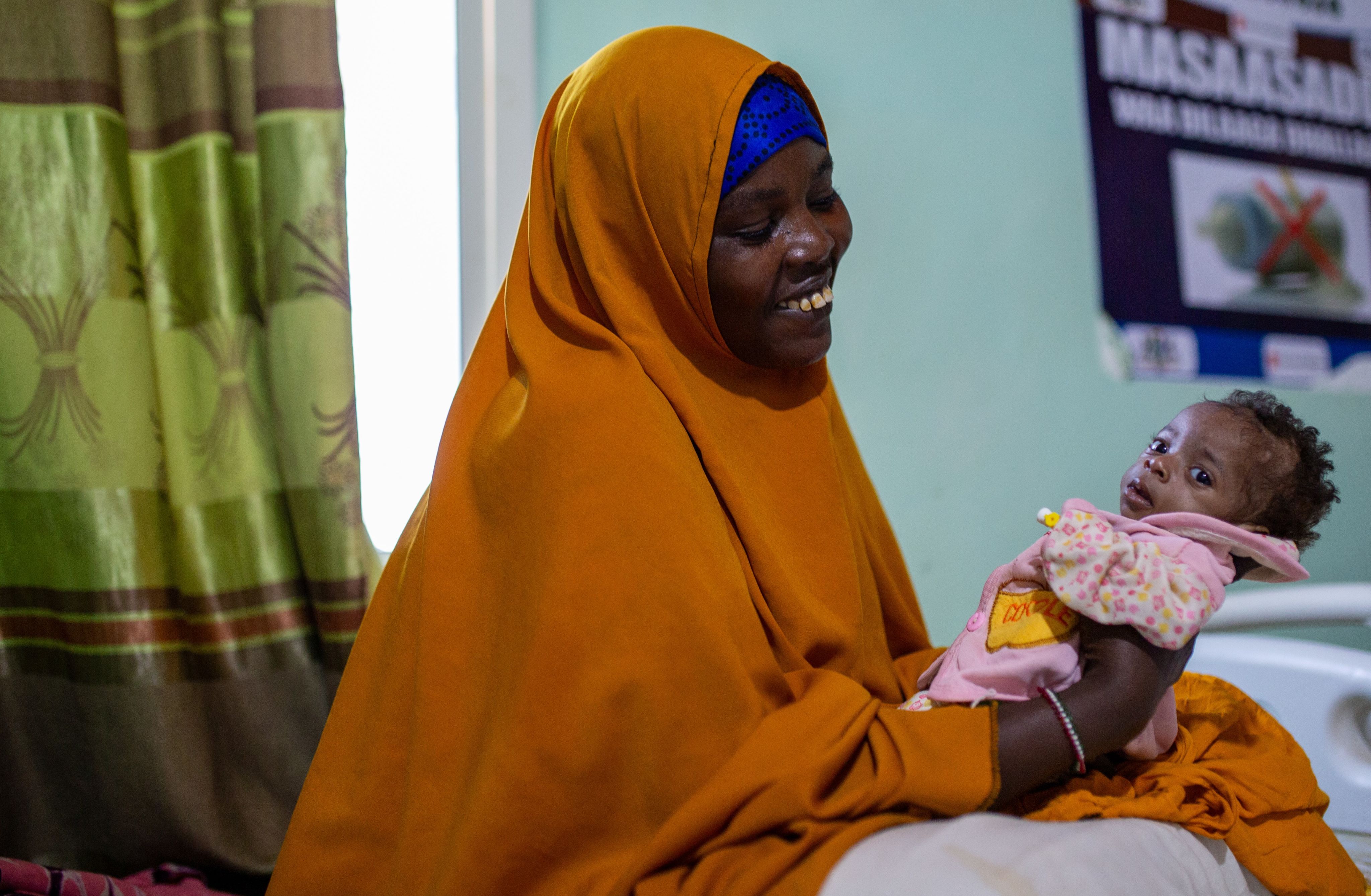
SAFE BACK TO SCHOOL & LEARNING
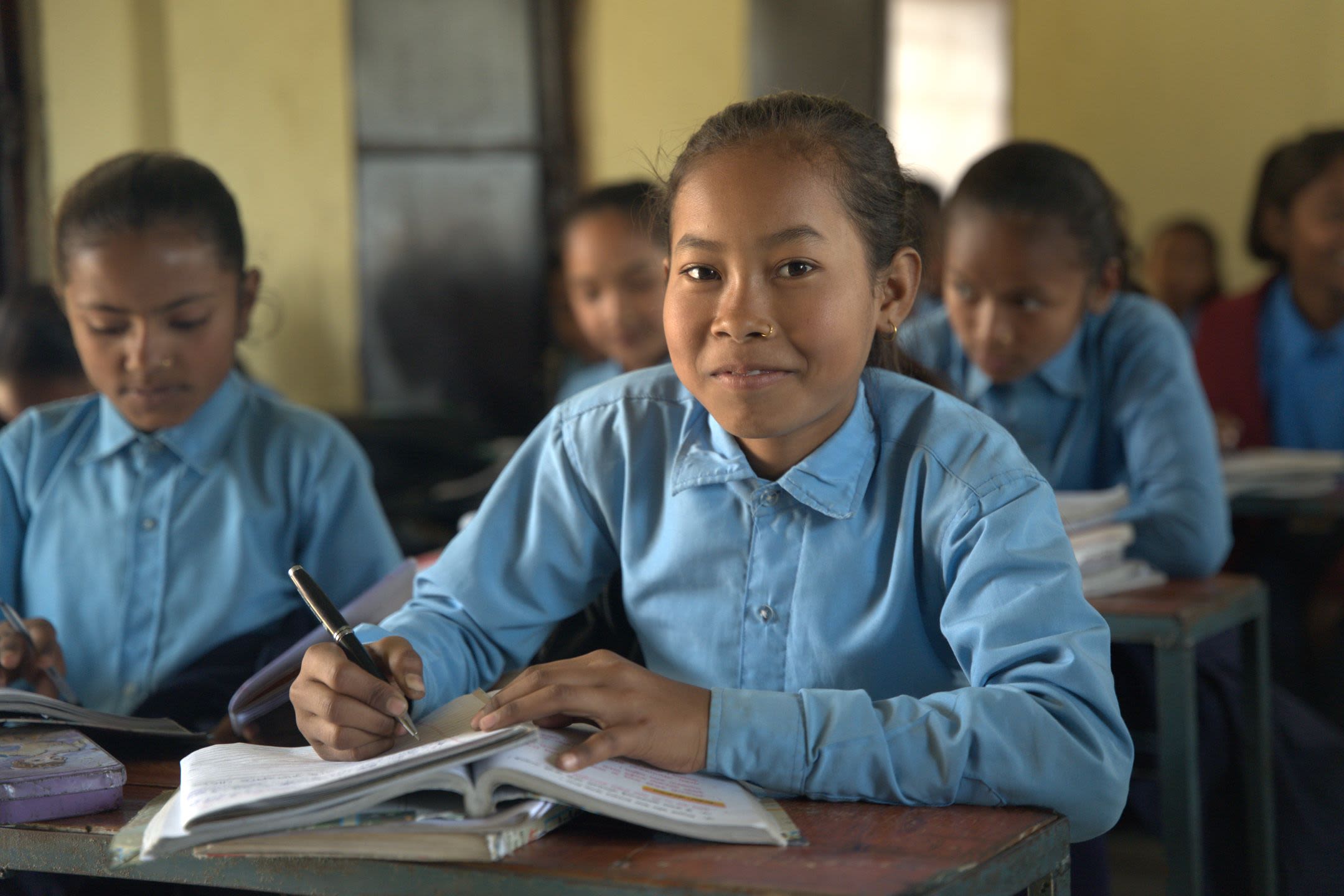
“ I want to become a nurse
when I grow up. Nursing is
a noble profession which
can help me serve people in
need of medical treatment.”
Pratiksha*, 11, Nepal.
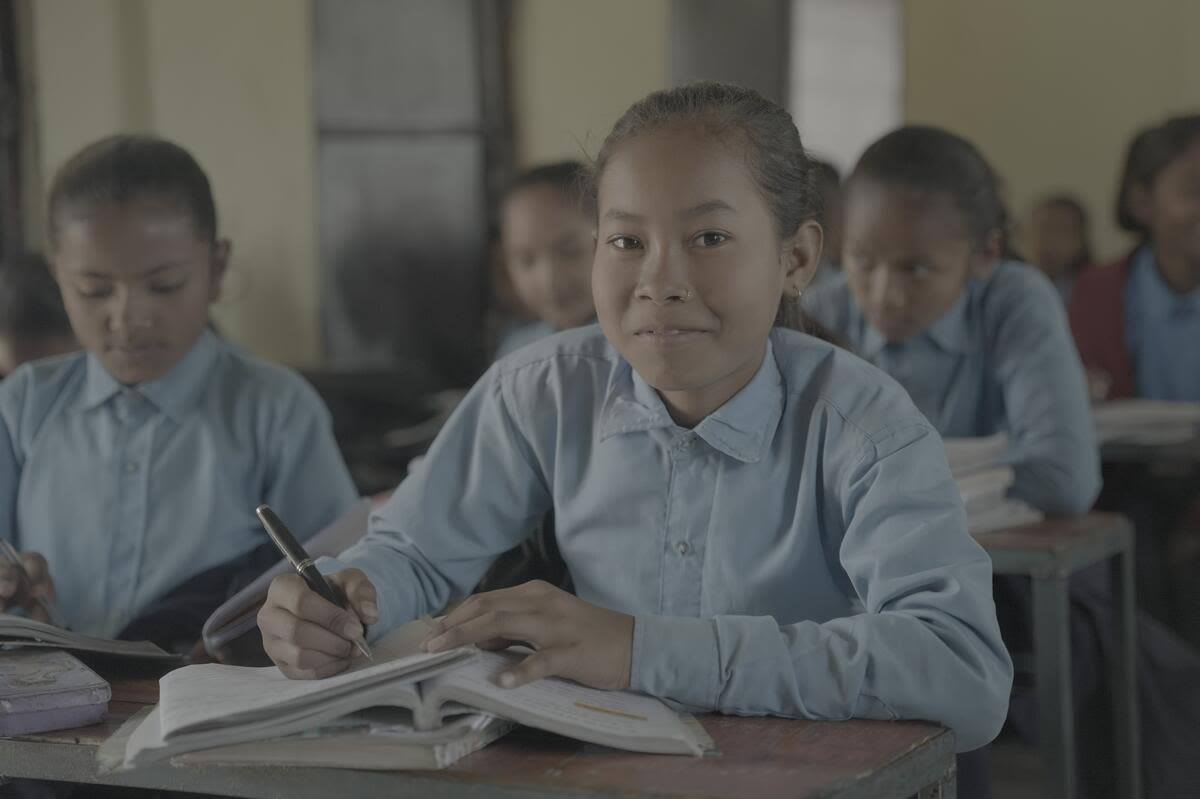

Progress towards our Safe Back to School influencing work is on track to meet our 2024 target. The performance of this work to ensure institutions are accountable for children’s rights is encouraging.
2023 successes included:
• We made significant achievements in influencing national governments to support early childhood care and development, especially in Ethiopia, Kosovo, and South Africa.
• In Cote D’Ivoire, we influenced a policy change to provide pre-primary education in primary schools, starting with rural areas.
• We far exceeded our target regarding the number of teachers we trained or supported, training 87,500 teachers and facilitators to provide quality teaching for children.
• Our ‘Catch-up Clubs’ continued to grow and provide children with opportunities for the learning they missed out on due to challenges such as COVID-19. By the end of 2023, among the 58,244 children across 13 countries who attended the Catch-up Clubs, 48% of children reached the highest literacy levels, being able to read and demonstrate comprehension of an age-appropriate story.
• We supported more than 2.7 million children to participate in learning opportunities in humanitarian contexts in 2023. This included 960,000 children in Ethiopia and 561,000 children in Yemen.
• Working with local partners, community stakeholders, governments, and caregivers, we supported or set up temporary or informal learning spaces, replenished lost or damaged learning materials, and provided teachers with training, including on child protection and psychosocial support.
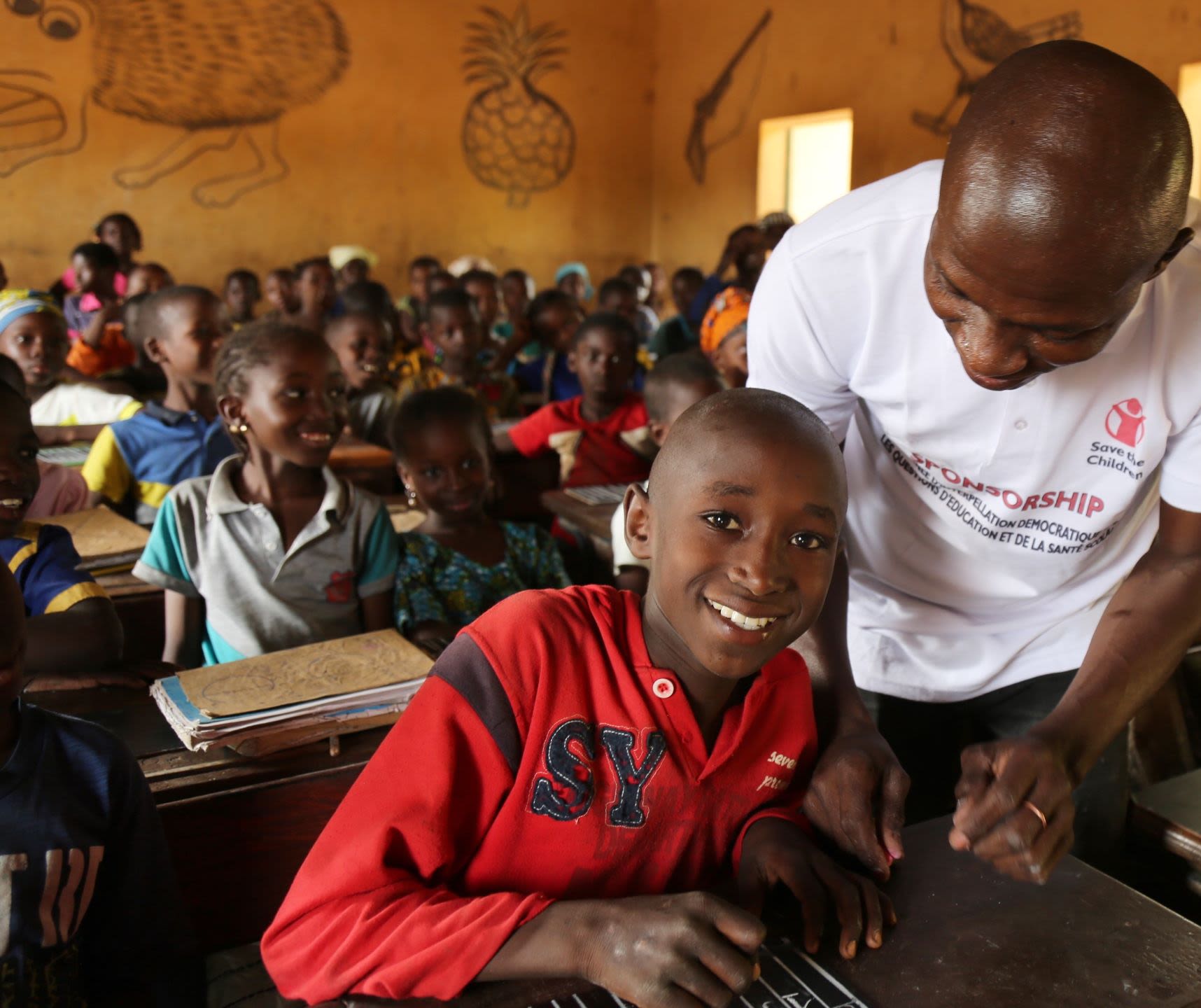
SAFE BACK TO SCHOOL AND LEARNING: HELPING CHILDREN IN EMERGENCIES RETURN TO SCHOOL
Our work last year to ensure children have access to quality learning opportunities saw us renew our successful 'RIRE' programme to help children in emergencies return safely to learning in Mali, Niger, and Burkina Faso.
Our Rapid Integrated Response for Children or Réponse Intégrée Rapide pour les Enfants (RIRE) programme in Mali, Niger, and Burkina Faso helps children aged between four and 12 to safely return to learning within the first three months of a crisis.
RIRE involves training community facilitators to use play-based educational activities to improve children’s socio-emotional learning and foundational skills. Community-based child protection teams are trained
to address the child protection needs of children and households. Mobile teams give psychological first aid to children and caregivers and provide referrals for children in need of more specialised mental health and psychosocial support.
RIRE is part of our Pilot Programmatic Partnership (PPP) with the European Civil Protection and Humanitarian Aid Operations (ECHO), which aims to improve the protective environment, wellbeing, and learning of displaced children and their host communities.
Our evaluation found that in a volatile context of expanding crisis, RIRE made it possible to reach significantly larger numbers of children than initially planned for, with a response-time of usually no more than three to seven days. The programme reached the end of its first three-year phase in 2023 and has been renewed for another three years.
LIVE FREE FROM VIOLENCE
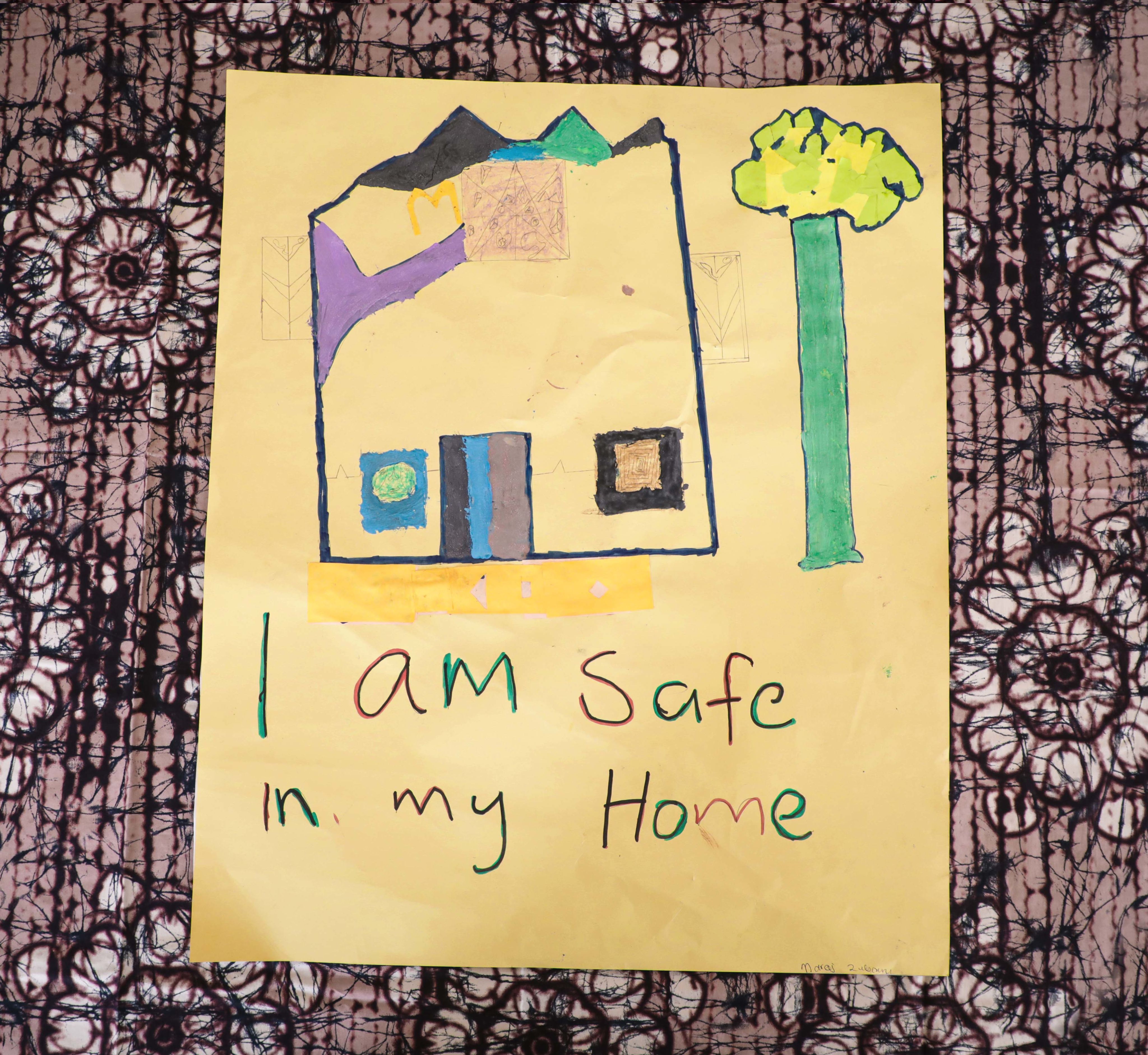
Our performance last year against our targets for our Live Free from Violence goal was the strongest of all our goals.
• Our influencing contributed to 25 governments and institutions being made more accountable. This work is underpinned by our contribution to 57 policy, legislative and budget changes relating to protection.
• We contributed to making sure that four countries saw state and non-state actors held to account for grave violations and other serious violations of child rights in conflict and crisis.
• Last year, our work to de-stigmatise and raise awareness of the benefits of mental health and psychosocial support in crisis regions was effective. In Afghanistan, for example, we saw a positive shift in children’s perceptions of mental health and psychosocial support.
• In 2023, we supported 9,400 child protection service providers with improved capacity to prevent and respond to cases of violence against children.
• Our recommendations significantly shaped the International Criminal Court’s revised Policy on Children. We advocated for a child-rights and child-sensitive approach in international justice processes.
• Our influencing work, with our partners, saw the African Union and 15 institutions commit to enhancing financial and political investment in justice access for children affected by armed conflict.
• Our advocacy work, with our partners, contributed to the UN General Assembly's resolution to include protection of children in digital spaces.
LIVE FREE FROM VIOLENCE:
SIMON'S* STORY
Our work to reunite families in South Sudan reached a significant milestone last year.
2023 saw us reach a milestone in our family reunification work in South Sudan, with more than 7,000 displaced children now reunited with their families. One of these is Simon*, 13, who lived with his family in Khartoum before fighting broke out in Sudan in April 2023. Simon escaped with others fleeing the conflict, but without his parents or family members. He travelled alone for three months before arriving at the Joda border point between Sudan and South Sudan where he was identified by the International Organisation for Migration (IOM) as an unaccompanied minor. IOM referred him to our South Sudan Save the Children team, who worked with our partners to find his relatives. The team provide child protection services, reunification, referrals, and community-based, gender-sensitive preventive and responsive interventions.
Simon is now living with his family in Juba. He says: “Save the Children gave me hope, hospitality and they honoured me. I thanked them from the bottom of my heart”. His brother, Samuel* says: “I thank the organisations who help children in the world... By now, Simon might have been killed, shot, and kidnap or even die of hunger if it wasn’t Save the Children’s intervention.”
*Simon and Samuel are pseudonyms to protect the brothers’ identities.
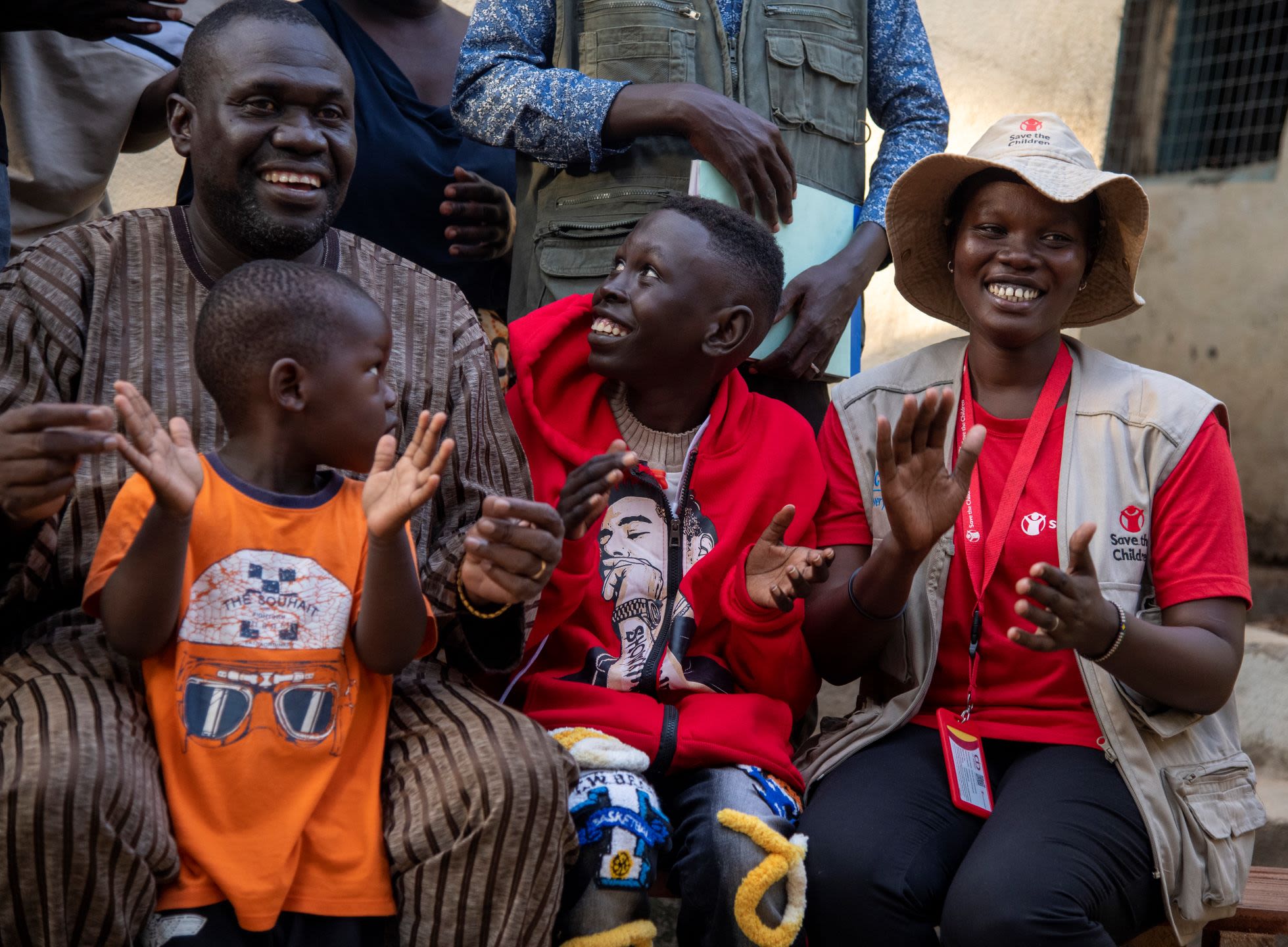
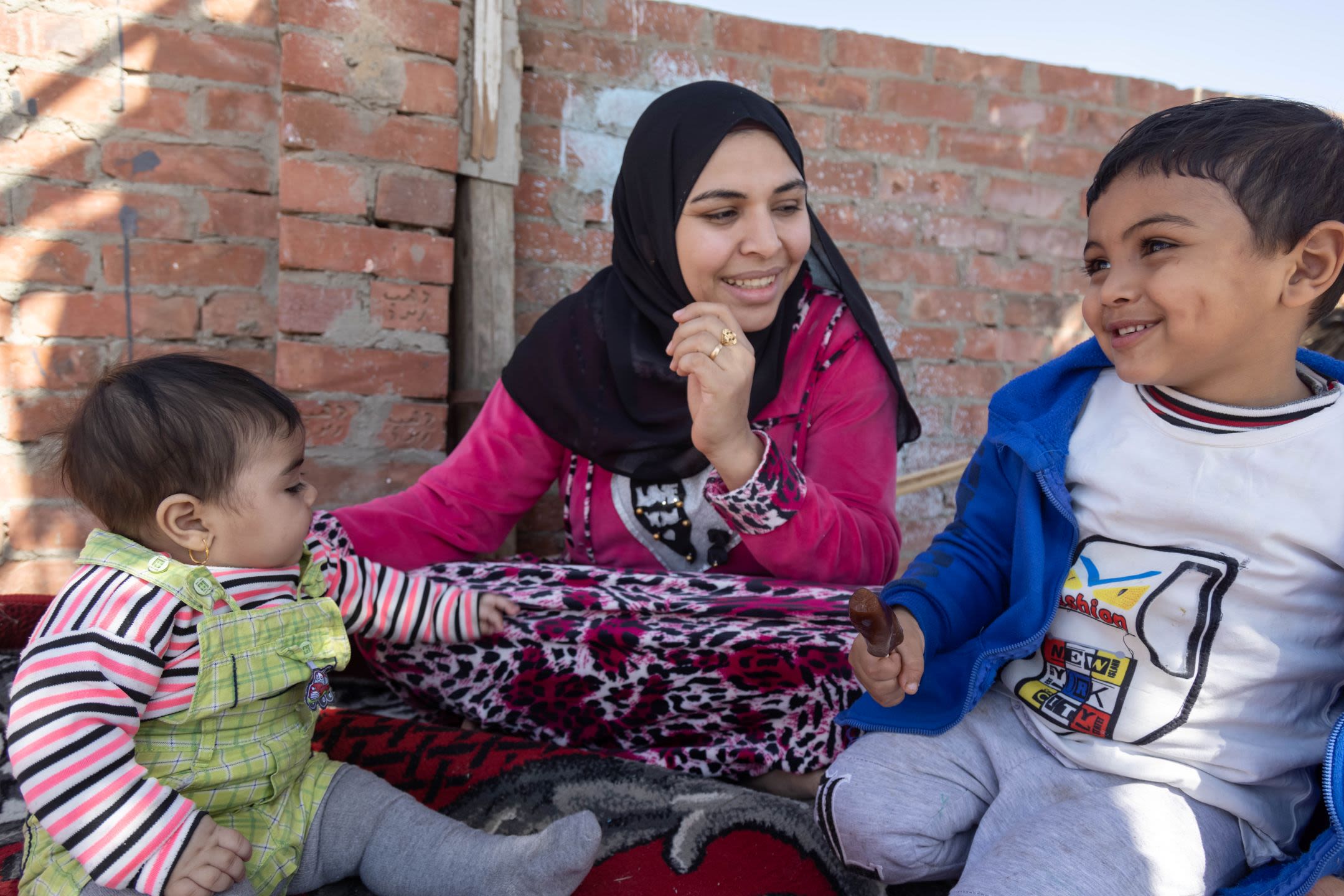
LIVE FREE FROM VIOLENCE
Our 'Safe Families' work was found to be effective in reducing physical and humiliating punishment of children.
A review of our Safe Families approach (previously known as Parenting without Violence) last year found that it was successful in reducing physical and humiliating punishment in the home – the most common form of violence against children around the world.
We have implemented Safe Families in over 40 countries including Bolivia, Colombia, China, Mali, Egypt, Kenya, Nigeria, Syria, Yemen, Somalia, and Papua New Guinea. The programme involves work with children of all ages, caregivers, and communities to support families to better communicate and solve problems together.
Our approach has four components:
• Sessions supporting parents to better understand child development and see children as rights holders with their own views and perspectives.
• Sessions for children to help them feel safe and valued and know where to seek help.
• Support for communities to address harmful social and gender norms that perpetuate violence against children.
• Strengthening laws and policies to support children and families and ban all forms of violence against children.
Our 2023 review looked at findings from the monitoring and valuations of projects in 14 countries that implemented Safe Families to assess the effectiveness of the approach. The review found a reduction in physical punishment and/ or psychological aggression by caregivers following their participation in the programme.
Caregivers’ belief in the necessity of physical and humiliating punishment to raise children was reduced, with an average of 25% of caregivers stating that physical and humiliating punishments were necessary to raise children at the end of a project compared to 53% at the start.
They also found more positive caregiver-child relationships, with an average of 99% of caregivers reporting more positive relationships at the end of a project compared with 41% at the start.
SAFETY NETS & RESILIENT FAMILIES
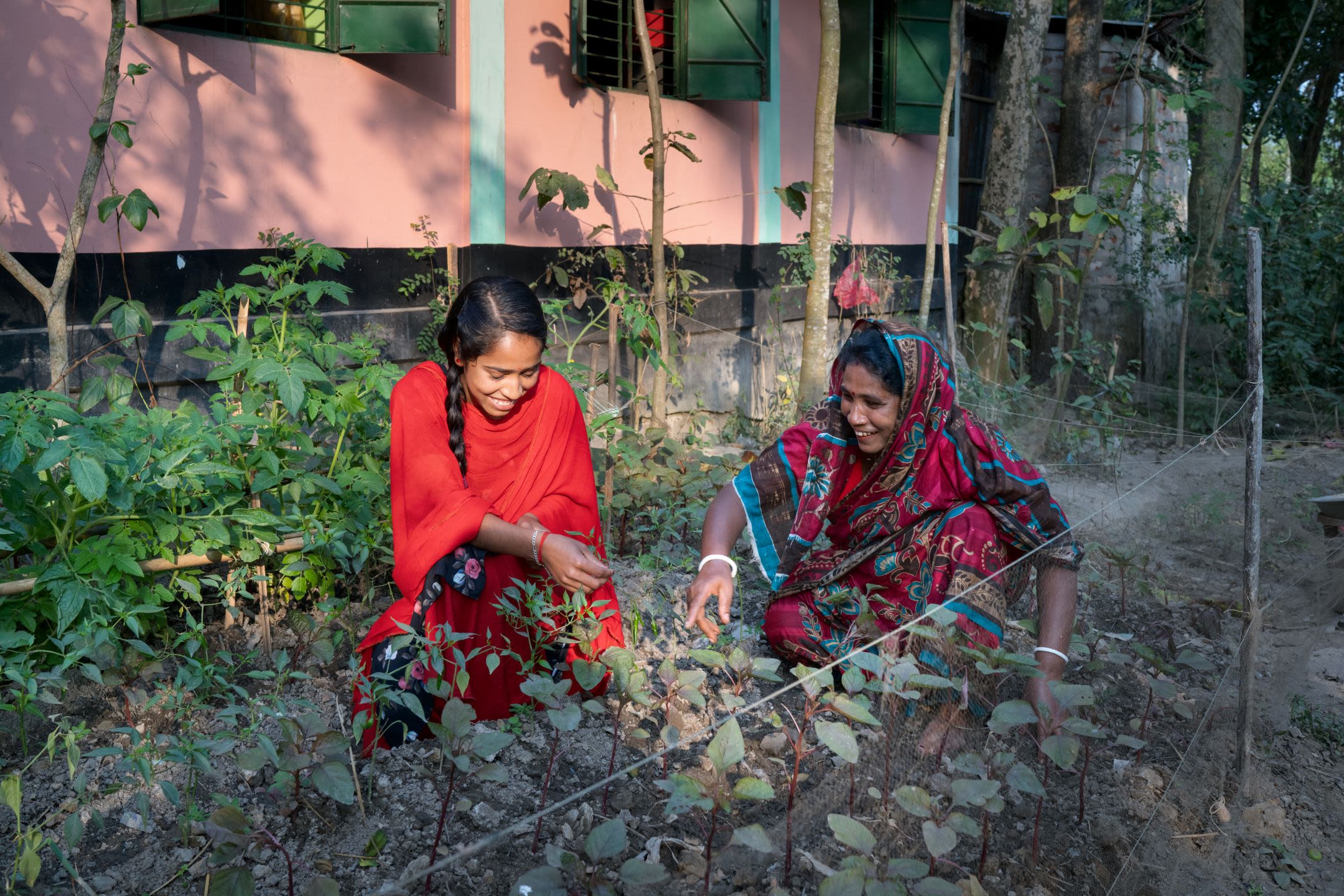
We made significant progress against our objectives in our Safety Nets and Resilient Families advocacy work, contributing to policy changes related to the climate crisis and social protection, and a high number of policy wins in country.
For example:
• We successfully influenced the UN Committee on the Rights of the Child’s release of General Comment No. 26 on children’s rights and climate change, and an agreement at COP28.
• In 2023, we worked with more than 25 organisations through the Global Alliance Cities4Children to raise awareness of the millions of children growing up in slums, so they are considered during the creation of development agendas, and funding and agency priorities.
• Our Green Mindsets work equips adolescents with the environmental knowledge and skills to become more mindful of their present and future impact on the environment and become motivated to create a sustainable world. We expanded this work to another 11 countries across Asia, the Middle East, North Africa, Eastern Europe, and Latin America and the Caribbean in 2023.
• Our Anticipatory Action work, acting ahead of a predicted
hazard or weather event, helped communities prepare for El Niño impacts in 14 countries.
• We provided 8.2 million people with livelihoods support, including supporting 1.2 million children and adults with cash and voucher assistance. This represents 80% of the target we hope to reach annually with cash and voucher assistance by 2024.
• We conducted wide-ranging research about the impact of our combined cash and voucher assistance plus child protection programmes, looking at a diverse range of humanitarian contexts, including children associated with armed forces and armed groups in the Democratic Republic of Congo, child labour in Egypt, child marriage in the Philippines, and family wellbeing and child labour in Lithuania.
The research found that cash plus protection produces better outcomes for children compared to cash alone, including significant reduction in child labour rates, reductions in child stress, improvements in household wellbeing, and increases in perceptions of child safety.
SAFETY NETS AND RESILIENT FAMILIES:
IMPROVING FOOD SECURITY IN BANGLADESH
Our eight-year Suchana project in Bangladesh came to an end in 2023. The project contributed to improving food security for approximately 250,000 of the most vulnerable households in Bangladesh and reached an estimated 1.4 million people.
The project ran in Sylhet and Moulvibazar, two districts in north-eastern Bangladesh with very high levels of chronic child malnutrition and poor infant and maternal health outcomes. It delivered nutrition and livelihoods interventions, including training and behaviour change approaches for nutrition, support for markets-based, nutrition-sensitive livelihoods, and work to empower women and girls.
An external evaluation led by the Institute of Development Studies in 2023 found that "Suchana effectively and sustainably addressed many of the immediate, basic, and underlying drivers of stunting".
The evaluation also found that food-secure households rose from 14% at the start of the project to 31% at the end, and the percentage of women receiving minimum dietary diversity rose from 26% at the outset of the project to 51% at the end. The prevalence of stunting among children aged 12 to 23 months fell from 50% at the midpoint of the project to 20% at the end.
Chan Vanu enrolled in the Suchana programme, where she learnt different vegetable growing techniques and was given everything she needed to set up her own vegetable garden. Thanks to a combination of her hard work and the Suchana training, she’s now able to feed her family nutritious meals and sell surplus produce to pay for her children’s school fees.
Meet more women and girls leading the way towards a sustainable future in Bangladesh.

OUR HUMANITARIAN WORK
Save the Children responded to 121 new and ongoing
emergencies in 63 countries in 2023.

At the beginning of 2023, the number of people around the world estimated to need humanitarian support was a staggering 339 million.
By December 2023, some 24 million more people needed support to access food, medical care, shelter, and other humanitarian assistance — bringing the total to an unprecedented 363 million people.
Over the year, we witnessed horrifying eruptions of violence, such as those in Sudan and Gaza, which ripped apart millions more children’s lives, and an outbreak of fighting in Sudan in April, which uprooted millions from their homes. Deadly earthquakes in Türkiye, Syria, and Afghanistan also impacted millions of children.
These are just a few of the many humanitarian crises that threatened children’s lives, rights, and futures across the world last year. From ongoing conflicts and insecurity in Ukraine, the Democratic Republic of Congo, Myanmar, and Haiti, to new emergencies triggered by the increasingly severe climate crisis and global economic shocks.
Working in partnership with local, national, and international organisations, UN agencies, governments and state authorities, our donors and supporters, and − above all − with children and their communities, we supported children caught up in crises to survive, stay safe, keep learning, and realise their rights.

EMERGENCY HEALTH UNIT
Save the Children’s Emergency Health Unit (EHU) of doctors, nurses, midwives, water, sanitation and hygiene specialists, and supply-chain specialists travel at a moment’s notice to the heart of a crisis.
Our team of experts has decades of experience and provides children in some of the hardest-to-reach places with the lifesaving physical and mental healthcare they need. In 2023, we deployed the EHU as a team six times to five countries. This included:
- Responding to a cholera outbreak in Malawi
- Responding to cyclone Freddy in Malawi.
- Responding to a diphtheria outbreak in Nigeria.
- Responding to a cholera outbreak in Burundi.
- Setting up mobile health clinics in Sudan.
- Preventing malnutrition and providing breastfeeding support in Afghanistan.
The EHU also deployed 11 staff members to provide support to 12 countries. Overall, the EHU directly reached more than 85,500 people, including more than 24,200 children in 2023. They also trained 705 health personnel and reached more than 345,800 people indirectly.

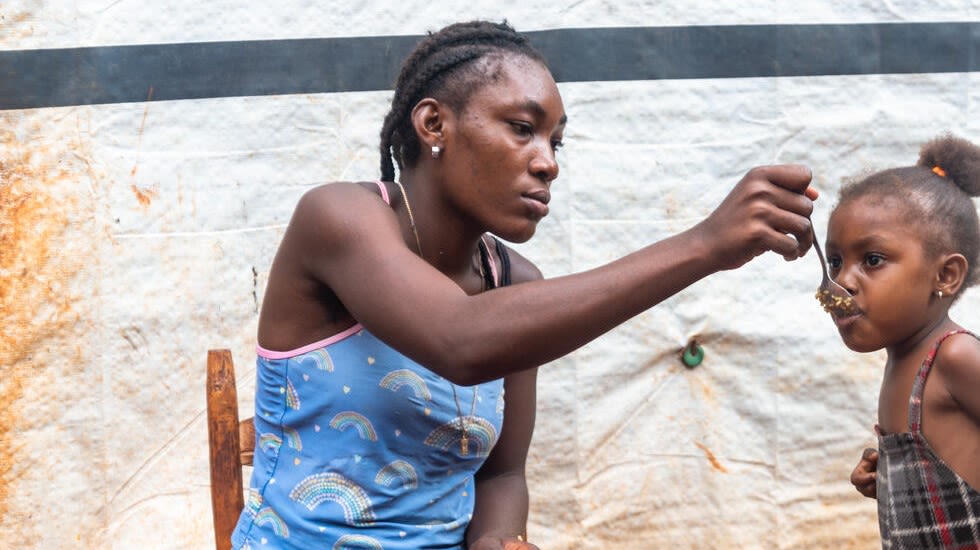
SUPPORTING FAMILIES IN HAITI
Our teams in Haiti met mother of two Asmine* at a community nutrition awareness-raising session. Every day was a struggle to feed her two children.
A deadly combination of escalating violence, worsening political and economic turmoil, and widespread poverty in Haiti has left families facing fewer job opportunities and growing food insecurity.
Our health workers screened Asmine's three-year-old daughter, Withmaly*, and diagnosed her with severe acute malnutrition. She was immediately referred to a local clinic to receive treatment.
We also provided Asmine with a cash transfer to cover medical expenses, transportation, food, and her eldest child’s school fees.
“It [the cash transfer] really helped me with my children. It allowed me to put them in school and buy things to send them to school.”
Asmine, mother of two, Haiti.
*Names changed to protect identities.
UPHOLDING CHILDREN'S RIGHTS

“When I see that there is any injustice, I have to say something. I CAN'T KEEP QUIET.”
Estefany*, 15, Peru.
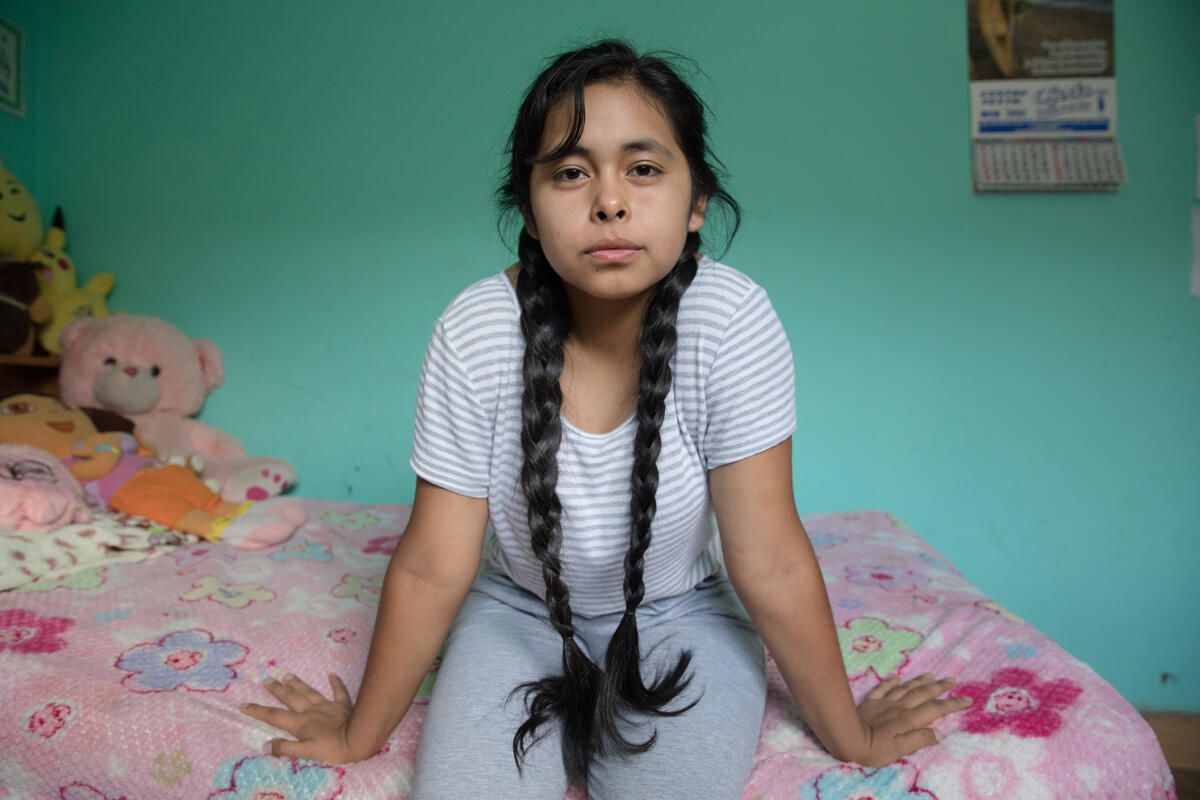

Save the Children has been fighting for children’s rights for over 100 years. Our founder drafted the Declaration of the Rights of the Child, the first international declaration promoting child rights, adopted by the League of Nations in 1924. Many years later, this evolved into the United Nations Convention on the Rights of the Child (UNCRC).
Our work continues every day to try to realise our founding ambition for every child, everywhere, to secure their rights. At the centre of this work is our support to building systems that are resilient and accountable to children. We do this through driving:
• Social accountability – Supporting children to organise with their communities to hold decision-makers accountable for their public service commitments to children.
• Public investment in children – Advocating for and
supporting governments to raise and spend more money, more fairly, and more transparently to fulfil children’s rights.
• Child rights reporting – Supporting diverse children to organise with civil society to monitor and report on child rights in their countries, and to secure a recognised space for child activists and human rights defenders.
Significant achievements in 2023, working with national and local partners, included:
• Our work with children and partners in Zambia helped ensure that the Children’s Code Act incorporated several of our recommendations when enacted.
• In Somalia, our advocacy work helped lead to the
development and adoption of a national plan of action for children by the Ministry of Women and Human Rights.
• Our work during the year helped increase public spending for children. In Guatemala, the local government of Jocotán approved the update of the municipal public policy for children, thanks in part to our influencing efforts.
• Our work with children in Cambodia helped persuade the government to increase the budget allocation for social services, hygiene, and the environment.
• And in Malawi, our advocacy worked helped ensure Ntchisi District Council adopted a resolution to incorporate children’s views during its district-based budget consultations in preparation for the national public budget.
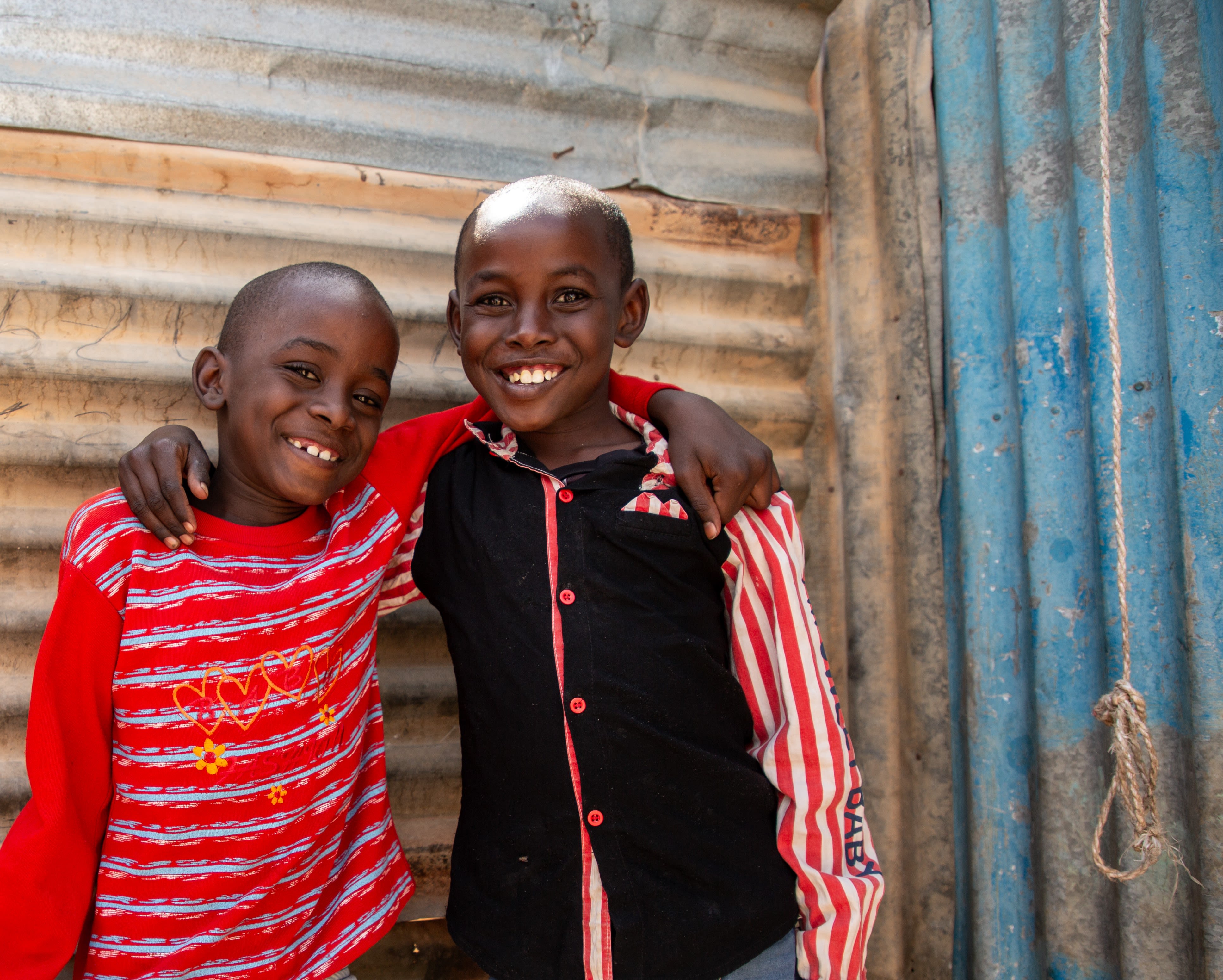
EQUALITY AND NON-DISCRIMINATION
Children have the right to survive, learn, be protected, develop, and participate, free from discrimination and inequality. Yet they often face discrimination because of their age, and many children face additional discrimination based on other aspects of their identity, such as gender, disability, socio-economic status, race, religious practice, or sexual orientation.
We focus on upholding child rights and achieving equality by
tackling the systems that are the root causes of inequality and
discrimination. In 2023:
• Our national office in Kosovo supported the professional
development and employment of people with disabilities. This included vocational training courses for men and women with disabilities, upskilling teachers and schools on inclusive education, and raising awareness with the general public.
• We engaged communities, including leaders and influential
individuals, in four regions of Ethiopia on the issues of female genital mutilation (FGM) and child marriage. We supported women and girls to increase their awareness of the issue, integrated the issue of FGM into bylaws, and improved the referral system for victims. After our intervention, we found that the prevalence of FGM declined by 24% across the four regions.
• We increased our evidence-based programming to reduce
child marriages and unions thanks to a global funding ‘accelerator’. We conducted ‘gender and power’ analyses in more than 14 countries looking at how gender intersects with other power differentials, such as disability; sexual orientation, gender identity, gender expression, and sex characteristics (SOGIESC); race; and ethnicity, to help us work to prevent these harmful practices.
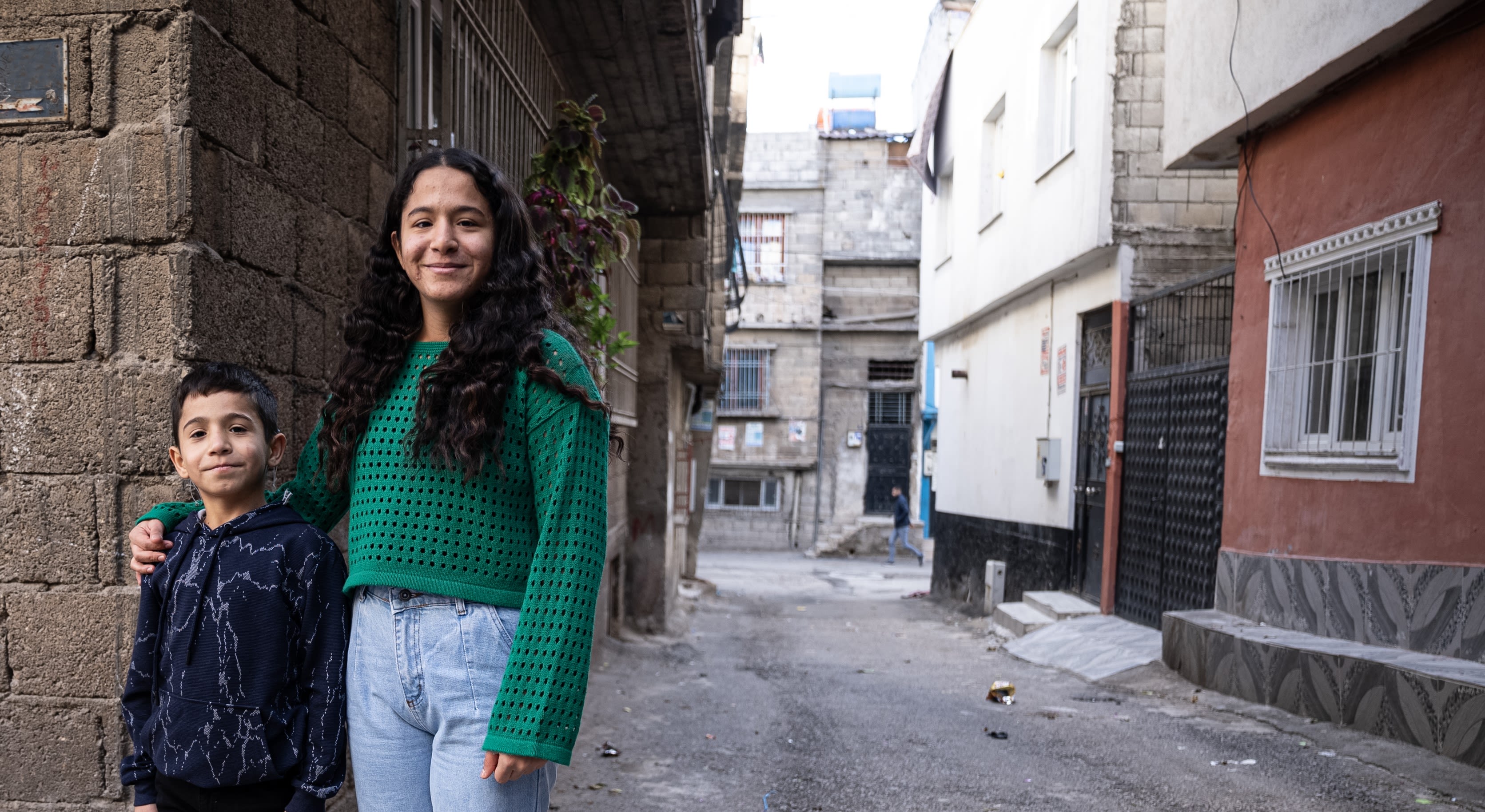
ADDRESSING INEQUALITY AND UPHOLDING THE RIGHTS OF CHILDREN WITH DISABILITIES
Our three-year ‘accelerator’ project to speed up progress for children with disabilities in eight low-middle income countries (Zambia, Cambodia, Malawi, the Philippines, Ethiopia, Afghanistan*, Sierra Leone, and South Sudan) came to an end in 2023.
The accelerator involved interactive training sessions in each country, co-facilitated with a national disability rights organisation, following which our country teams implemented specific programmatic and/or advocacy pilot projects to support children with disabilities and their families.
These projects spanned all our global goals and took place in both humanitarian and development contexts. In Zambia, a national hotline was introduced to support parents of children with disabilities. In Cambodia, the national directory of social services was overhauled, which has improved access to services for children
with disabilities.
In Malawi and the Philippines, we provided guidance on how to include people with disabilities during the immediate aftermath of an emergency. In Ethiopia and South Sudan, our community awareness campaign urged parents to keep children with disabilities in school.
In Sierra Leone, staff were trained in disability inclusivity,
improving programmes that reach over 10,000 children.
Following this work, our ‘accelerator’ concept has been recognised as best practice and has been replicated to accelerate our progress on ending child marriage. This work has been made possible thanks to the generous funding of a philanthropist.
*In Afghanistan, we undertook training in the spring of 2021, but we have had to pause this work and focus instead on humanitarian assistance.
THE CLIMATE CRISIS AND CHILDREN'S RIGHTS
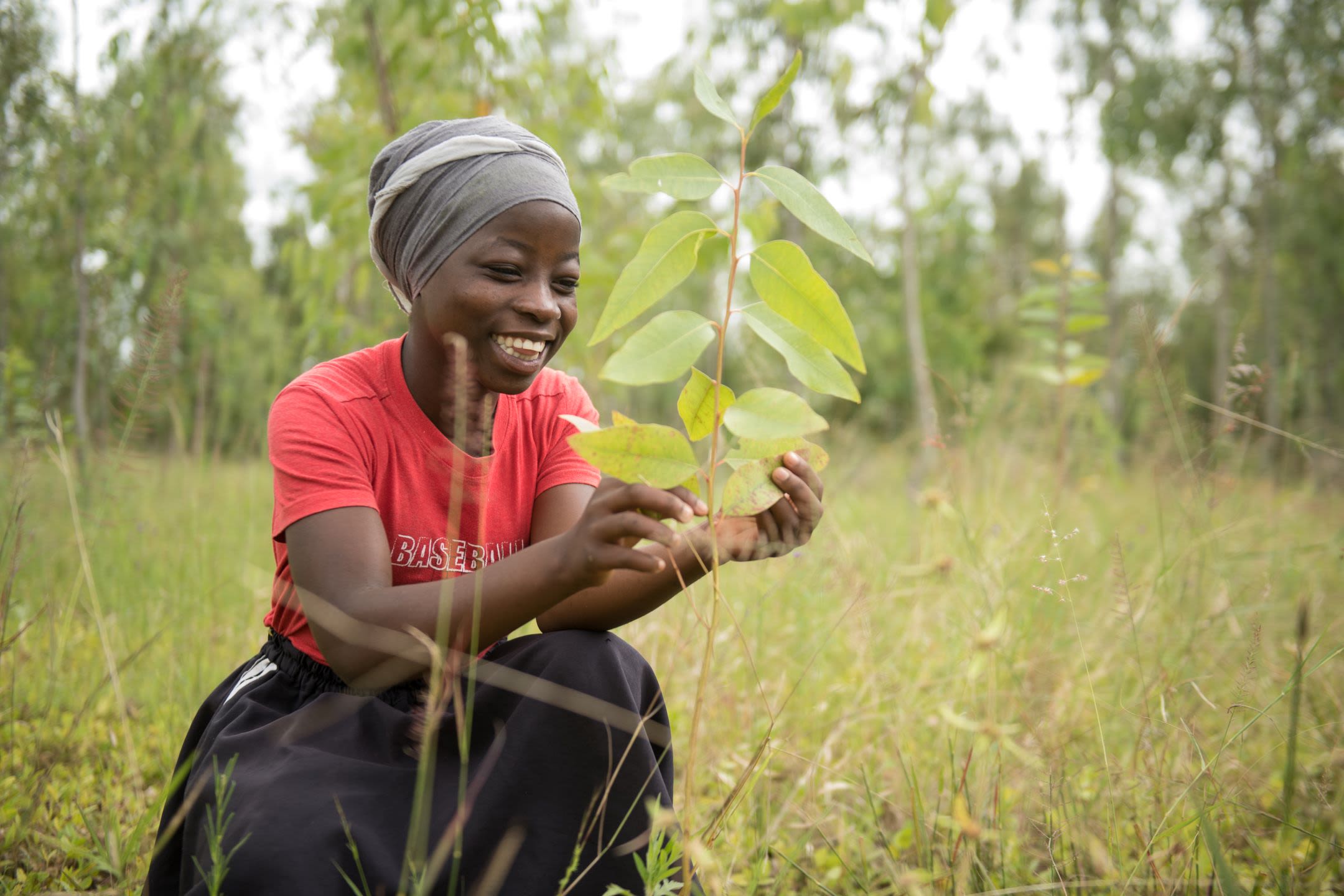
“If I was the president, I would encourage people
to plant trees and stop smoke-producing behaviour, because these behaviours make the country face a bigger climate crisis.”
Esther, climate change champion, 17, Malawi.
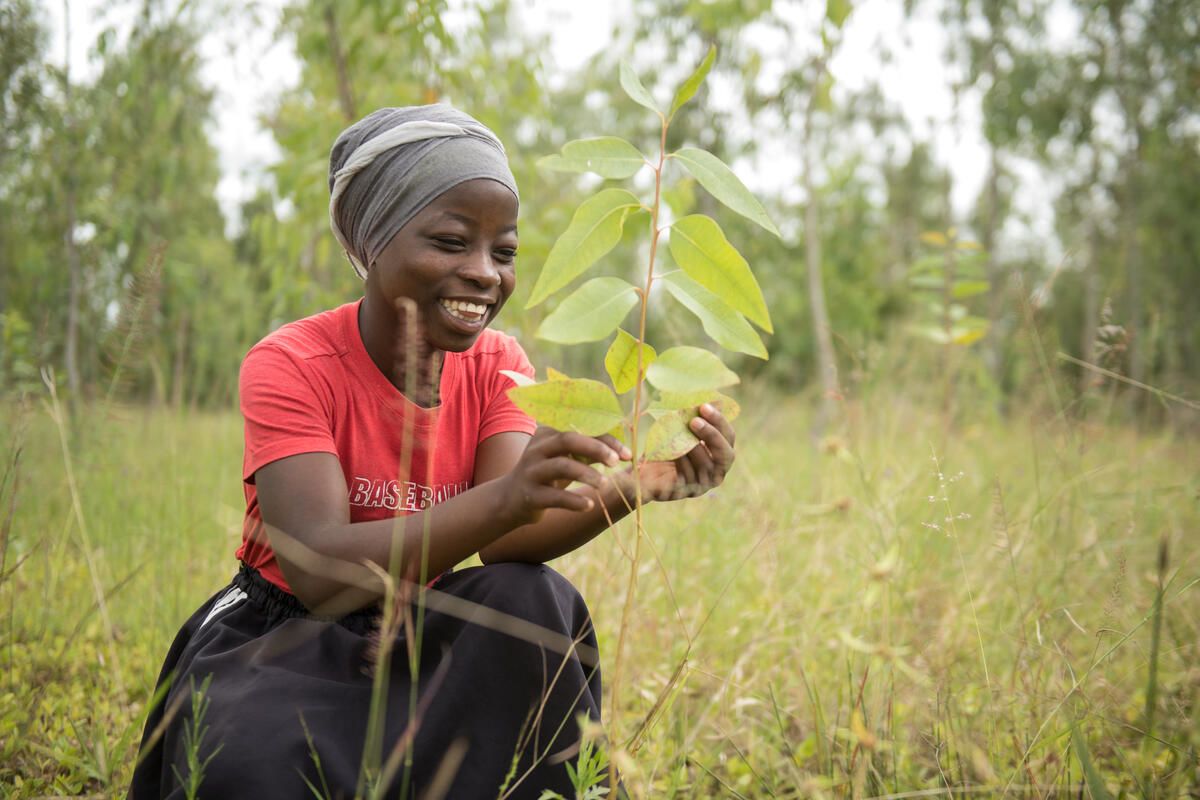

Climate change now threatens to destroy much of the progress we’ve made. Climate change is hurting those least responsible for it most: children. And those already facing hunger and conflict, poverty, and discrimination are suffering most of all. But there’s still time to change course.
Those living in places impacted most by climate change – including children – know best what needs to be done. And as the leading experts on children’s rights, we are working to increase the climate resilience of children, their communities, and their futures with smart solutions.
We can already see our solutions changing children’s lives, and we’ll keep on innovating to discover more, hand in hand with children, their communities, our trusted partners, and global supporters.
Our response to the climate crisis is a focus for our global advocacy and campaigning, programming and partnerships, fundraising, also with partners, and our own operations.
Read about our approaches to tackling the climate crisis in our full Annual Report.
OUR GENERATION HOPE CAMPAIGN
Generation Hope is our campaign for and with children calling for urgent action on the climate crisis and inequality. It calls for political action to tackle climate change, an increase in public investment in children, and for children to be a part of the decision-making on this crucial issue.
In 2023, we supported more than 14,200 children across 40 countries to strengthen their skills and meaningfully lead and participate in campaigns for a greener and fairer future. We delivered an impactful and inspiring Week of Action ahead of the UN Sustainable Development Goals summit during which we gave 3,000 children the tools, safe spaces, and platforms to share their views and hold their leaders to account. This included holding the first virtual Children’s Assembly, with over 50 children from more than 10 countries, ensuring that children’s views were heard by world leaders at the summit. We captured the children’s powerful messages in a new publication: Listen. And Act. Children’s messages to global leaders.
In the run up to the Conference of Parties (COP) 28, we supported children in 14 countries to engage in strategic dialogues with their COP delegations through national Generation Hope ‘COP simulations’ so their views were included in COP28 climate discussions.
In 2024, our child advisory group will provide a safe and meaningful space for children to influence the campaign’s direction. We will continue to put children at the centre of our Generation Hope advocacy and campaigning by enhancing our investment in child participation, strengthening our global campaigning efforts and supporting children to deliver their own initiatives at national, regional, and global levels.
If you say we are the world leaders of the next generation, leave us a world to lead."
Read the stories of children who are speaking out for a greener and
more just future: Meet the generation who will change the world.
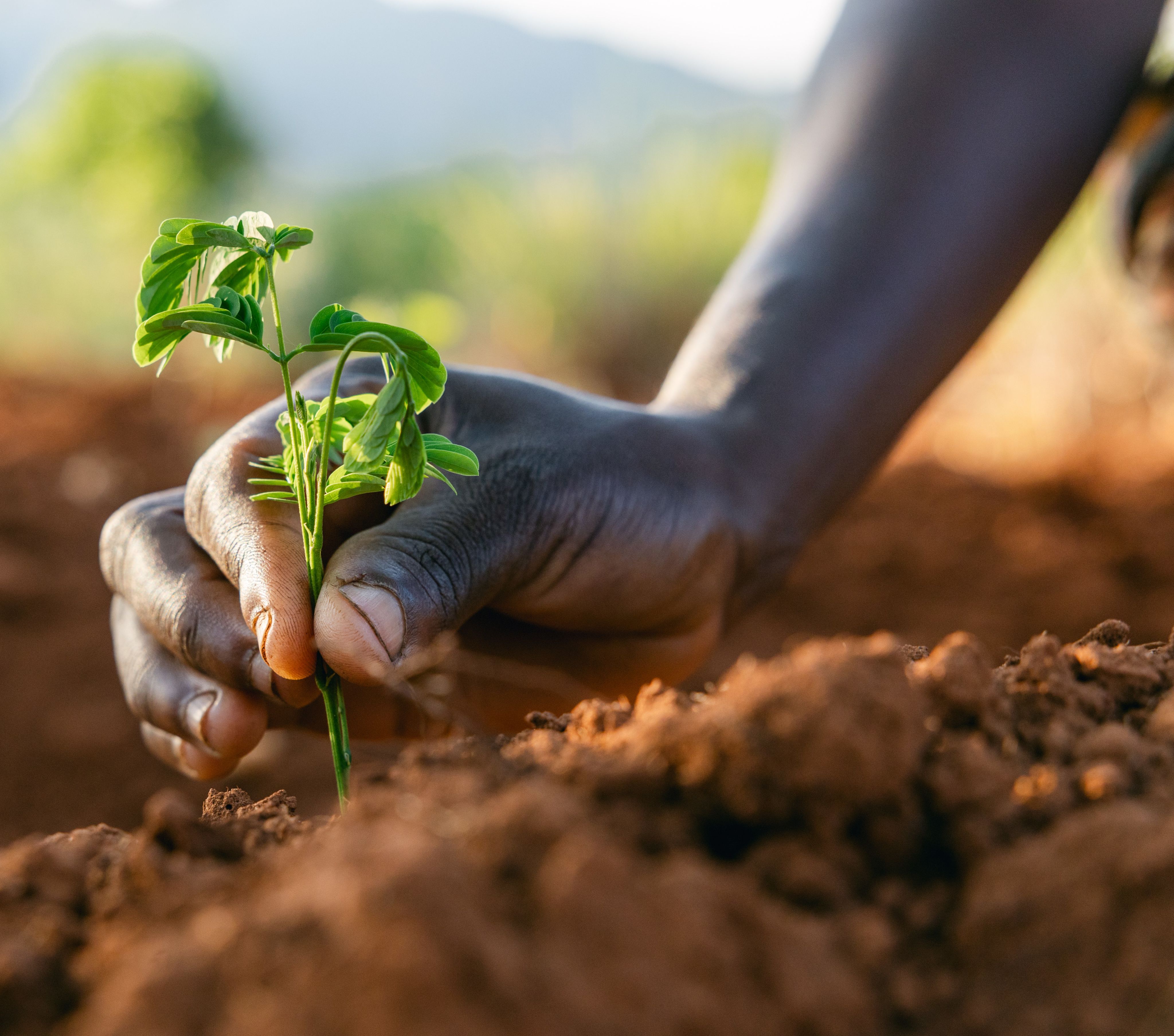
"I campaign because I want a better future."
Sara, 15, Kosovo



EARLY WARNING, EARLY ACTION
We know that climate-driven crises will increase in number, scale, frequency, and intensity in the coming years and will have the worst impact on the most vulnerable children and communities. Anticipatory Action, acting ahead of a predicted hazard or weather event, can prevent or reduce the impacts on communities before they fully unfold.
In June 2023, in anticipation of the El Niño climate pattern, we launched an initiative with our global, regional, and country teams, and with our partners, to prepare for and act in advance of related impacts. Taking lessons learned from past El Niño events, such as the 2015/2016 event that impacted 60 million people across 23 countries, we allocated USD $2 million to support communities and local partners to build their resilience and capacity to act once defined triggers were met.
We used this moment to test tools, guidance, and support systems for anticipatory action across the organisation. Based on analysis of expected impacts, local capacity to respond, and our readiness for early action, 14 countries were selected to receive funds for risk-informed preparedness and anticipatory action.
In total, 25 countries developed plans for El Niño. This work, which is still ongoing, will inform our work to improve systems for community and child-centred risk monitoring and early action in the future.
OUR PEOPLE AND CULTURE
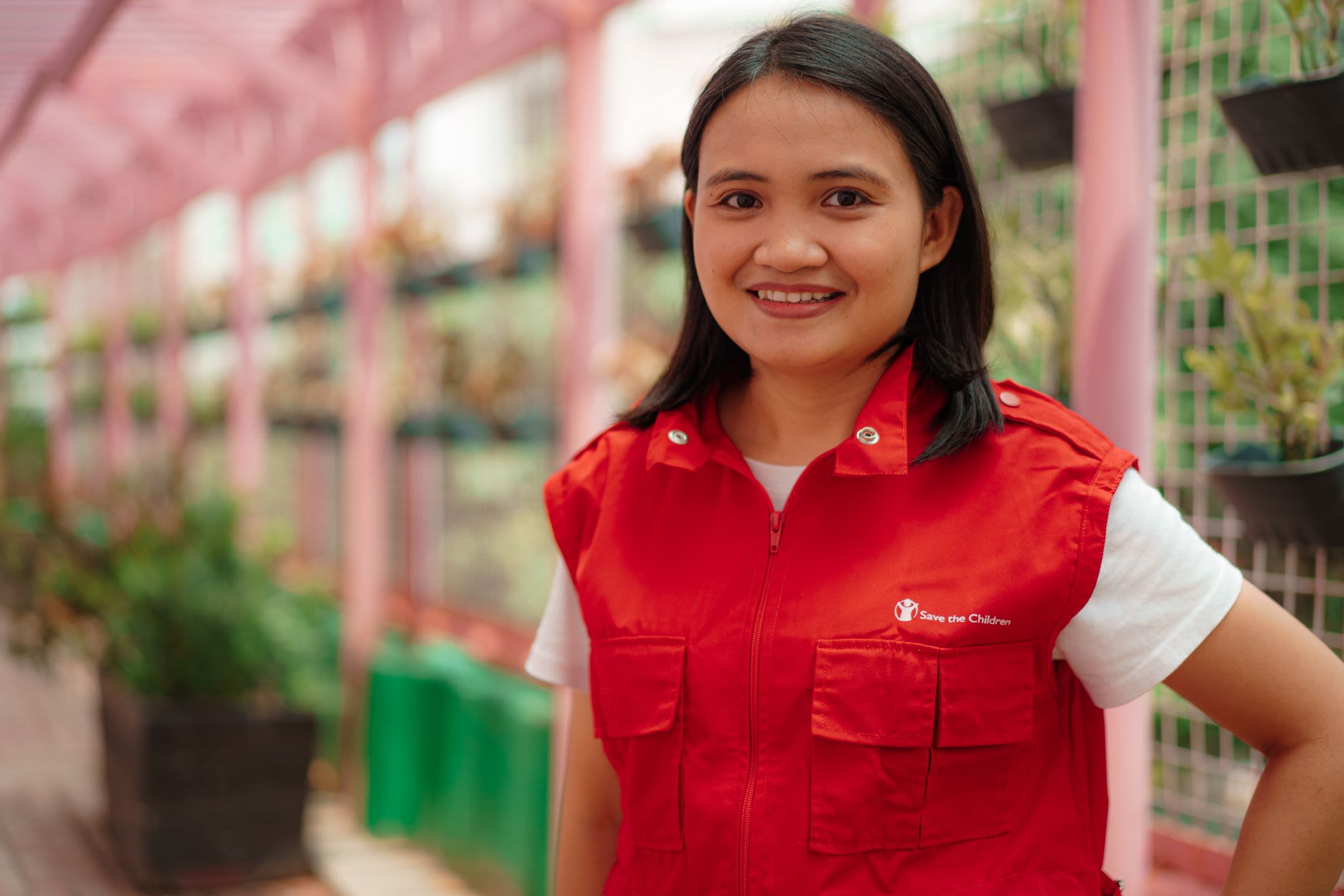
At Save the Children, we know that great teams are made up of people who come from a wide range of backgrounds.
We believe that, if we want to better reflect and represent the children and communities we serve, then we must continue to diversify the make-up of our organisation, including our leadership teams, and create an inclusive work environment where staff can be themselves.
We continued our work last year to develop and increase diversity of our talent, leadership, and management pools, and on optimising our learning systems. We focused on succession planning for mission critical roles and senior leadership roles, such as Country Directors and our Extended Leadership Team.
We are committed to creating a truly diverse, equitable, and inclusive organisation. Our Diversity, Equity, and Inclusion policy outlines our commitment to fairness in our recruitment, training, promotion, and employment processes for all staff. It also prohibits any form of discrimination against staff from protected characteristics, including sex/gender, disability, race, sexual orientation, gender identity and expression reassignment, religion or belief, marital or civil partner status, and pregnancy and maternity.
In 2023, we launched a gender pay gap analysis study in conjunction with our Gender Pay Gap Advisory Group to examine the root causes of our gender pay gap. This work is being led by an external consultant who will develop actionable, evidence-based recommendations to inform the basis of an action plan in 2024 on how we can narrow the gap.
LOOKING AHEAD
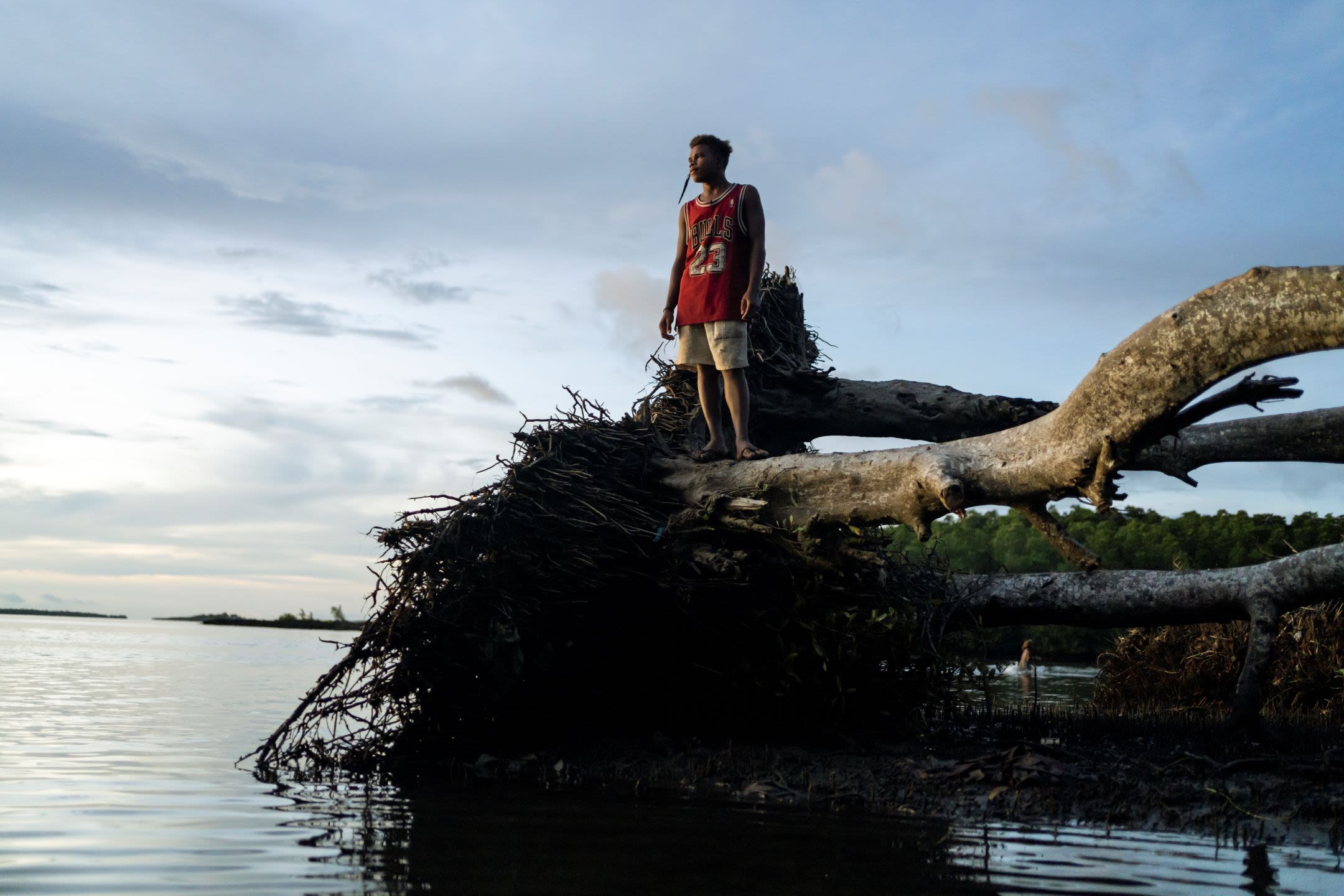
2024 is the third and final year of our three-year strategy that sees us accelerating our progress towards the breakthroughs we want to see by 2030.
We know our strategic direction remains relevant but our approach must evolve, so we are in the process of reconfirming our current global strategy and country strategies for another three years, while updating them where necessary.
Our collective priorities for 2024 will see us step up our progress in key areas of the strategy.
• We will strengthen our focus on children most impacted by inequality and discrimination.
• We will assert our position that the climate crisis is a child rights crisis and strengthen child participation in support of children’s rights, and in promoting accountability to children.
• We will embed digital and data to measure impact, drive evidence-based decision-making, and support fundraising.
• We will continue to strengthen strategic partnerships to amplify impact.
• We will also strengthen our focus on people and talent to improve diversity, equity, and inclusion across the organisation, developing our leaders so that they have the skills and confidence to further our agenda and build an inclusive and compassionate culture.
• We also intend to grow unrestricted income through long-term investment and by creating a best-in-class experience for our supporters.
• We will also champion a change programme to make Save the Children fit for future, with a focus on reforms to shore up our financial sustainability and become a stronger, locally led, globally connected movement.
Reflection from Angela Ahrendts, Chair of the Board
"To everyone worldwide involved in our mission, we thank you for your unwavering dedication and compassion. The life-altering programmes you continue to support and deliver for children are needed now more than ever in recent history. Thank you."
Angela Ahrendts
Chair of the Board

HOW YOU CAN HELP DEFEND CHILDREN AND THEIR RIGHTS
“I like to play.
But sometimes I
don’t play because
I’m hungry…”
Kazy*, 8, Madagascar
Children’s rights are being increasingly threatened.
We will continue to work relentlessly to respond to those threats and champion children’s rights around the world.
Join us and support children worldwide to survive, learn, and be protected.
Find out more about our work at savethechildren.net.
